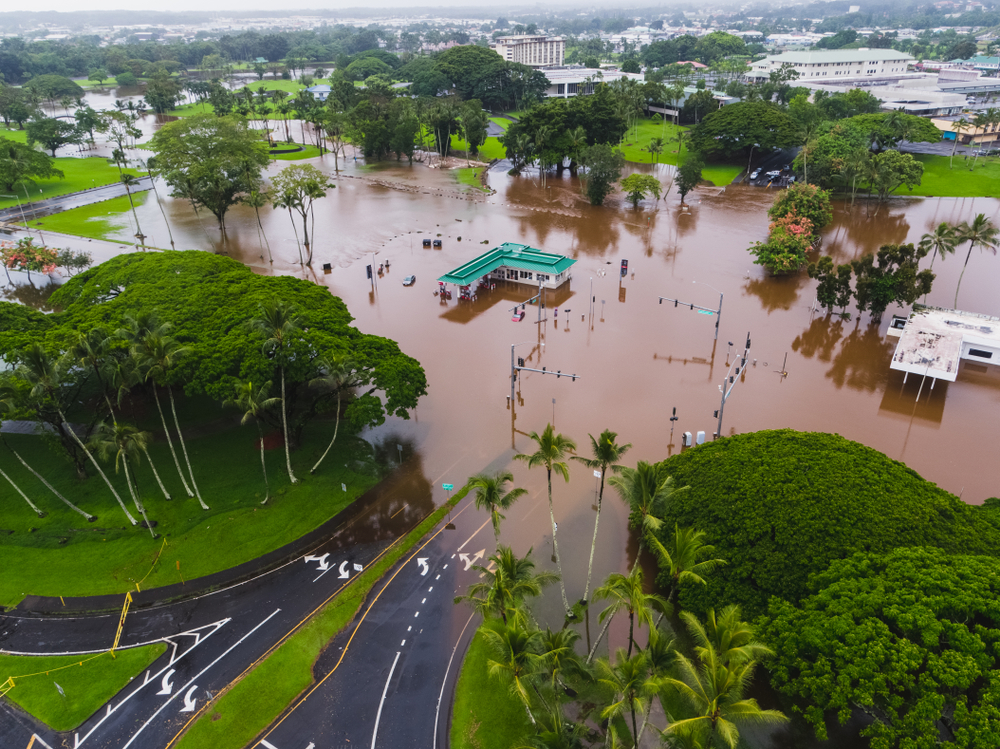Hawaii Pushes for Protection Plan to Save Beaches from Rising Sea Levels
At a Glance
- Hawaii will see a 3-foot rise in ocean levels by the end of this century, a study found.
- More than 6,000 of the state’s buildings will experience chronic flooding.
- The plan would focus on Honolulu but act as a pilot program for the rest of the state.
Hawaiian lawmakers, fearing that sea level rise will lead to extensive flooding in Honolulu, have proposed a coastline protection program that would defend the city from regular tidal inundations.
Famed Waikiki Beach regularly has seawater flowing onto roads and sidewalks during the highest tides, and interactive maps of the Hawaiian Islands show that many parts of the state are expected to be hit by extensive flooding, coastal erosion and loss of infrastructure in coming decades
That’s an alarming scenario for a state where beach tourism is the primary driver of the economy, leading some lawmakers to insist that planning for rising tides should start now.
“The latest data on sea level rise is quite scary and it’s accelerating faster than we ever thought possible,” said state Rep. Chris Lee, a Democrat and lead author of a bill calling for the creation and implementation of the shoreline protection plan. The project would focus on urban Honolulu but act as a pilot program for other coastal communities around the state.
While Hawaii is rarely subjected to direct hurricane hits, Lee’s bill says warmer oceans will increase that risk by creating “more hurricanes of increasing intensity” — and estimates the impact of a major hurricane making landfall at $40 billion.
“The loss of coastal property and infrastructure, increased cost for storm damage and insurance, and loss of life are inevitable if nothing is done, which will add a significant burden to local taxpayers, the state’s economy, and way of life,” says Lee’s bill, which is similar to action taken by New York City after a storm surge from Superstorm Sandy led to $19 billion in damage in 2012.
The Hawaii measure proposes sinking $4 million into the program’s development over the next two years. The bill also seeks more research into a carbon tax that might raise funds and lower the state’s dependence on fossil fuels.
Lee said urban areas such as Waikiki are often “built in such a way that it forms a protective barrier against the kind of storm events that are inevitable.”
But in more rural areas, he said, new construction could be restricted close to shore “to preserve dune systems and build in a lot of natural solutions that are much more cost effective and provide a much more resilient result than simply building out concrete infrastructure or anything of the sort.”
In a state dominated by Democrats that is regularly at the vanguard of U.S. efforts to address climate issues, Lee said the legislation proved popular. A version of the bill has passed both chambers of Hawaii’s Legislature. House and Senate leaders will convene in the coming weeks to discuss final changes before sending the bill to Gov. David Ige, a Democrat. His office has declined comment on whether he will sign it.
The bill is moving forward two years after a state-mandated sea level rise adaptation report was made public to act as a guideline for future legislative action and planning.
Research included in the report suggests Hawaii will see a 3-foot rise in ocean levels by the end of this century. It predicts that more than 6,000 of the state’s buildings and 20,000 people across all of Hawaii’s islands will experience chronic flooding. Dozens of miles of roadways, utility infrastructure and beaches will be washed away, the report said. The state’s ports and low-laying airports are also highly vulnerable.
The report was updated in September to included newly published research warning that previous estimates of inundation areas in Hawaii were underestimated by 35% to 54%.
University of Hawaii researcher Tiffany Anderson, who led the study, said traditional sea level forecasts use what is known as the “bathtub model” to measure where water will rise and flood land. But she was surprised by the dramatic increase revealed when she factored in more variables such as beach erosion and wave energy fluctuations, which are not used in traditional climate change flooding predictions.
“We’ve long suspected processes like shoreline erosion, waves overtopping and inundation would be additional factors for Hawaii,” Anderson said. “We found out it covers a lot more land … I wasn’t expecting such a large increase due to these other two processes.”
State Rep. Nicole Lowen, a bill backer and Democrat, said people hoping to build near the coast should already be wary.
“It would make sense already to say, ‘If we know this is a sea level rise inundation area, then why would we permit a new structure,'” said Lowen, who was the lead author of separate legislation that would have changed construction permitting standards across the state.
That measure died when it was referred to the Senate Ways and Means Committee and not scheduled for a hearing.
“I think sea level rise and climate change impacts globally are going to have a huge disruptive effect on economies,” Lowen said. “And having an economy that’s so heavily based on tourism and so easily impacted by something like the cost of oil rising, for example, it’s not resilient.”

